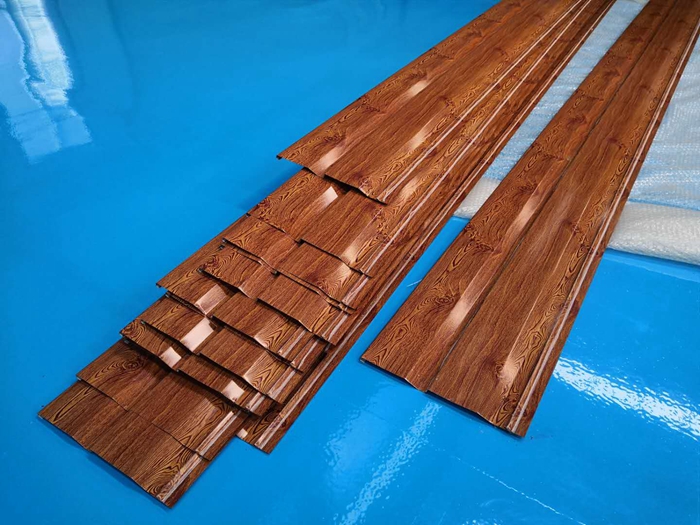Roller Door Production Equipment for Efficient Roll Forming Solutions
Understanding Roller Door Roll Forming Machines
Roller door roll forming machines are specialized pieces of equipment used in the manufacturing of roller doors, which are essential components in a variety of applications, including commercial and industrial buildings. Roller doors are favored for their reliability, durability, and security, making them an ideal choice for many businesses. A roll forming machine is a critical investment for companies looking to produce high-quality roller doors efficiently and cost-effectively.
The Basics of Roll Forming
Roll forming is a continuous bending process in which a long strip of metal is fed through a series of rollers. Each roller shapes the metal incrementally until it reaches the desired profile. This technique is known for producing consistent and precise components with minimal waste. Roller door roll forming machines utilize this process to manufacture the tracks, guides, and slats for roller doors.
Key Components of Roller Door Roll Forming Machines
A typical roller door roll forming machine consists of several key components
1. Feed Mechanism This part ensures that the metal coil is fed uniformly into the machine. It is crucial for maintaining the proper tension and alignment of the strip.
2. Roller Stations There are multiple roller stations, each designed to further bend the metal strip into the desired shape. The precise arrangement and design of these rollers are critical for achieving the correct profile specifications.
3. Cutting Unit Once the metal has been formed into the desired profile, it is cut to length. The cutting unit can operate in two primary modes shearing, which cuts the metal while it is moving, or a stop-and-cut mechanism, where the machine pauses before cutting.
4. Control System Modern roll forming machines are equipped with advanced control systems that allow for automation and monitoring of the production process. These systems can adjust settings automatically to maintain optimal performance and product quality.
5. Stacking Mechanism After the components are cut, they need to be organized for easier handling. A stacking mechanism collects the finished products and arranges them systematically, facilitating the next steps in production or shipping.
roller door roll forming machine

Advantages of Using Roller Door Roll Forming Machines
There are several benefits to investing in roller door roll forming machines
1. Efficiency Automated processes reduce labor costs and improve production speed. These machines can produce large quantities of roller door components in a short time, meeting high demand without compromising quality.
2. Precision The ability to produce consistent profiles means less rework and waste. With advanced control systems, manufacturers can achieve tight tolerances and exact specifications.
3. Flexibility Many roller door roll forming machines are designed to accommodate a variety of metal types and thicknesses. This versatility allows manufacturers to respond quickly to changing market demands or customer preferences.
4. Cost-Effectiveness While the initial investment in a roll forming machine may be significant, the long-term savings in materials, labor, and time can lead to higher profit margins.
5. Quality Control Continuous monitoring and automated adjustments help ensure that every product meets quality standards, which is vital for maintaining customer satisfaction and brand reputation.
Applications and Market Trends
Roller doors manufactured with roll forming machines are widely used in commercial sectors like warehouses, showrooms, and shopping centers. The growing trend toward automation and security in buildings drives demand for robust roller door solutions. As industries evolve, the need for energy-efficient and sustainable products is also increasing, prompting manufacturers to innovate and improve their production machinery.
Conclusion
In conclusion, roller door roll forming machines play an essential role in the manufacturing of reliable roller doors. Their efficiency, precision, and flexibility make them an attractive option for companies looking to enhance their production capabilities. As the market evolves, these machines will continue to adapt, ensuring that manufacturers can meet the demands of their customers while maintaining high standards of quality and efficiency. Investing in a roller door roll forming machine not only improves production output but also positions companies for success in a competitive landscape.
-
Roof Panel Machines: Buying Guide, Types, and PricingNewsJul.04, 2025
-
Purlin Machines: Types, Features, and Pricing GuideNewsJul.04, 2025
-
Metal Embossing Machines: Types, Applications, and Buying GuideNewsJul.04, 2025
-
Gutter Machines: Features, Types, and Cost BreakdownNewsJul.04, 2025
-
Cut to Length Line: Overview, Equipment, and Buying GuideNewsJul.04, 2025
-
Auto Stacker: Features, Applications, and Cost BreakdownNewsJul.04, 2025
-
Top Drywall Profile Machine Models for SaleNewsJun.05, 2025








